Exploring the amazing sites of Milan, Italy’s fashion capital, can really work up an appetite. After aperitivo is winding down and it’s time for dinner, you’ll find yourself with plenty of choices. The beauty of Milan is that it brings together so many cultures – dining options are always varied and exciting. Some locals might have you thinking sushi is true Milanese cuisine, as it is a local favorite and the weekend treat of choice. But what is authentic Milanese food?
Milan’s food is influenced by its rural past and Austrian connection, authentic Milanese cuisine is simple, yet rich – there are dishes influenced by royalty – like the panettone, and those influenced by peasants – like the hearty polenta. One thing is for sure, all dishes are sure to leave diners with full bellies and good spirits.
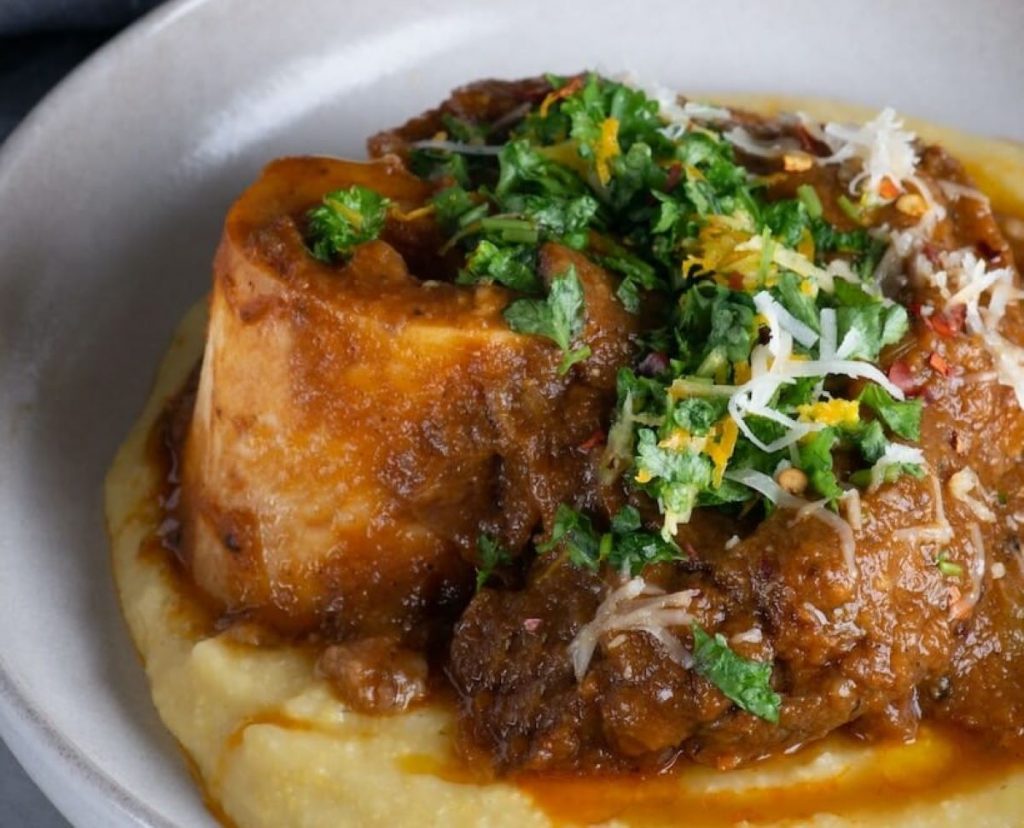
Authentic Milanese dishes
Risotto alla Milanese
The only way to start talking about Milanese food is with risotto alla Milanese. Traditional Milanese dishes are all about simplicity, and that is evident in this classic, yet elegant dish.
A classic risotto with the final touch of Parmigiano cheese and saffron transforms this plate into a refined meal with a creamy texture and rich taste.
This dish is said to have originated in 1574, with an experiment by a painter hoping to wow his guests with a burst of color on the table. Whatever its true origin, it’s a local staple you should be sure to try it next time you are in Milan.
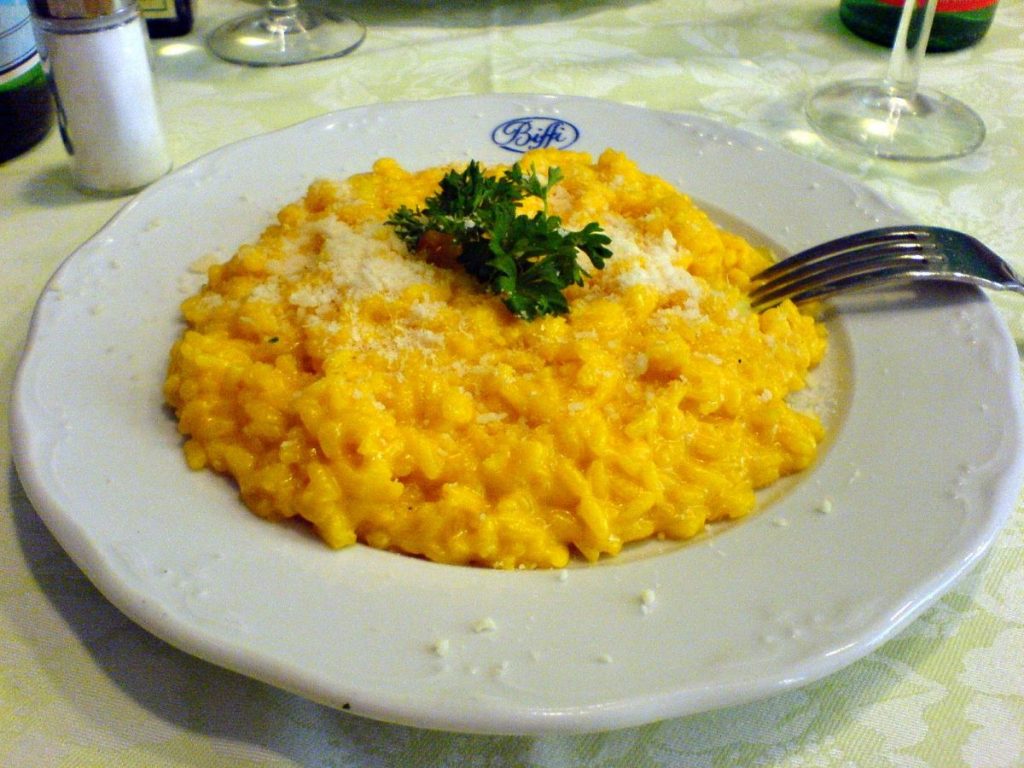
Cotoletta alla Milanese
Probably the oldest dish in Milanese cuisine, and second to the risotto, it is the most known Milan food. The cotoletta alla Milanese seems to have arisen from the Austrian influence once held over the city, but historical documents show us it was the Milanese who influenced the Austrians!
Cotoletta is veal loin, passed in egg and breadcrumbs, another simple dish made excellent when prepared right. To be served “correctly” as true local foodies will tell you: a piece of the bone should always still be connected.
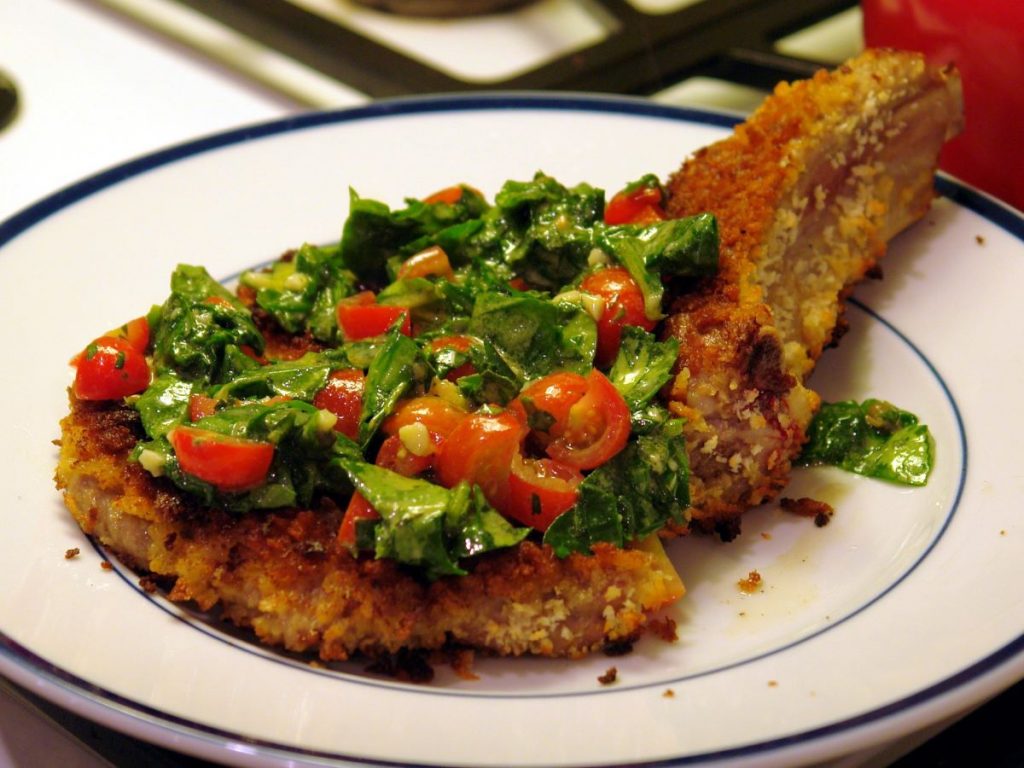
cogito ergo imago
Ossobuco
Ossobuco is another typical dish of Milan, often served alongside the delicious risotto alla Milanese, or with a steaming scoop of polenta.
What is Ossobuco exactly? Well, the name means “pierced bone” in the local dialect. It refers exactly to the piece of meat used: veal shank. This provides the soft meat around the bone and the marrow within.
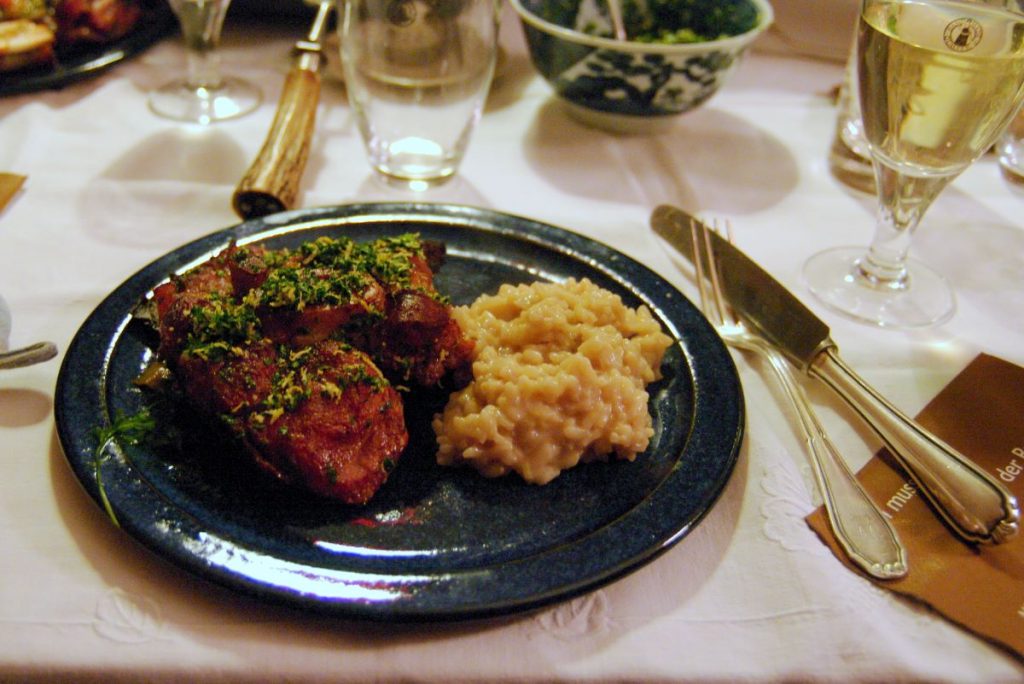
Mondeghili
Some of us might want to just call them meatballs, but locally they are considered a little more particular. Though in essence, the Mondeghili are rolled meat, bread, and eggs.
The recipe comes from the rural tradition of Milan’s history, where the goal was to not let anything go to waste. All leftover bits of meat were minced together and then mixed with eggs, bread, and a tad of cheese. For extra flavor garlic and nutmeg are used. Then these balls are rolled in dough and fried in butter.
Enjoy these Milanese meatballs as a main course, sometimes dressed with a tasty tomato sauce.
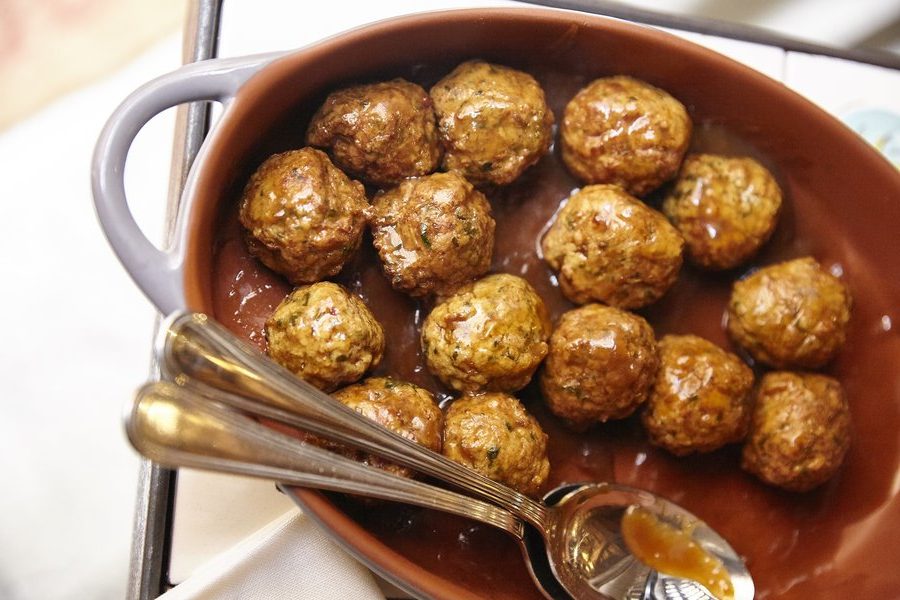
Büseca
Büsèca is a local dish of beans and tripe. It is a reminder of the poorer Milanese traditions, one that is rare to find but still enjoyed on some tables.
This easy offal dish was once enjoyed by those who worked along the famous Navigli canals. It was just the right dish to warm them in the winter, and fill their bellies with enough energy to continue their hard work.
Panettone
To end on a sweet note: we can’t forget about Italy’s favorite Christmas cake, the panettone!
The true symbol of Milanese pastries, the panettone is a tall sweet bread made most traditionally with candied citrus peel and raisins. Not an easy pastry to whip up, panettones take over 30 hours to take its final form – a true mark of artisan baking.
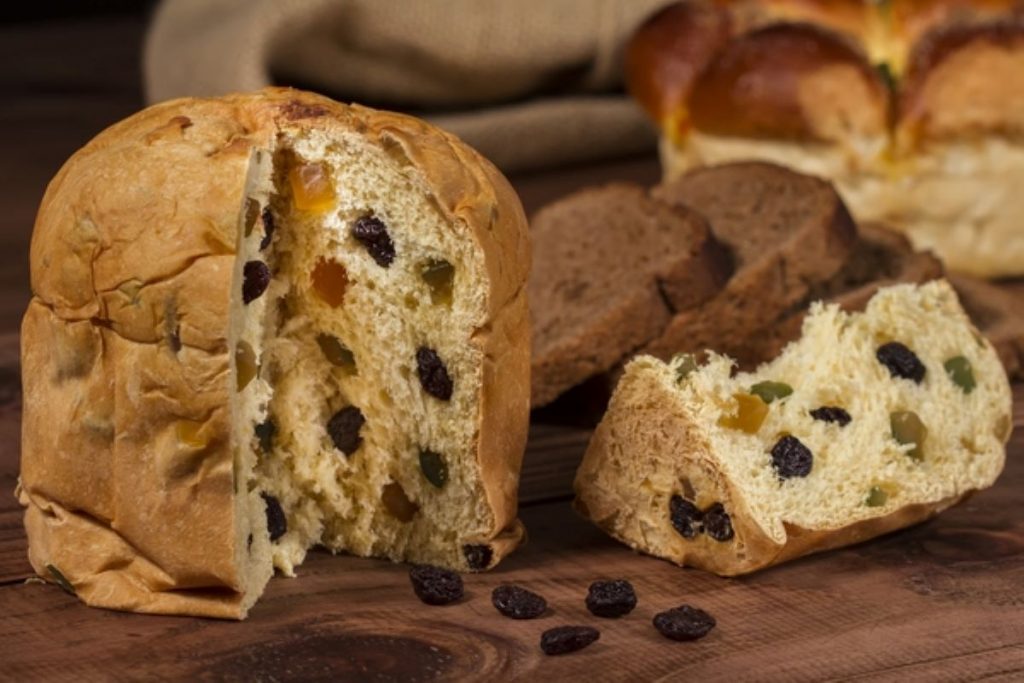
The origins of the panettone are still a tad bit mystery, there are two legends that speak of it.
The first and most popular takes us back to Milan’s noble families. It is said in 1495, a kitchen assistant for Ludovico il Moro had mistaken a recipe and decided to mix together his own “Pan de Toni” (Toni’s bread). It was a hit in the court, who requested it time and time again. This is generally the most accepted origin story.
The second legend is a bit more of a scratch, but a fun story nonetheless. This story speaks of a young nobleman who fell in love with the baker’s daughter who was in fact a nun. In order to spice up her holy life, she baked her feelings into a gluttonous sweet bread.
Traveler’s tip: Once you’ve decided on where to enjoy a delicious Italian supper, why not check out the actual Last Supper? Sign up for our skip-the-line tour of The Last Supper to see this amazing masterpiece up close.
Where to enjoy authentic Milanese food
Feeling inspired by these authentic Milanese dishes? Here are a few of our favorite restaurants to try a taste of the city’s traditions.
Ratanà
Chef Cesare Battisti is all about bringing traditional dishes to life in an innovative way. Here at Ratanà the menu always makes room for the classics but is presented in a way that will wow you. They source all their ingredients from small producers, choosing only the highest quality product.
Find them just a few steps from the Gioia metro station, in a beautiful stand-alone villa. Here you can enjoy bar seating or tables for groups. When the weather is nice grab a seat in their beautiful garden to take in a bit of greenery hidden within Milan’s busy streets.
Trattoria Masuelli San Marco
A family establishment since 1921, this vintage corner of Milan is an excellent spot to try the authentic traditional fare. The feeling at Trattoria Masuelli is warm and friendly, with a welcoming staff and a touch of curious design found in the chandeliers signed by design legend Gio Ponti. Much of the decor is original, letting guests step back in time to another version of Milan.
The menu is classic, serving up the symbolic dishes of the city with excellent ingredients. Not to be missed on your next trip!
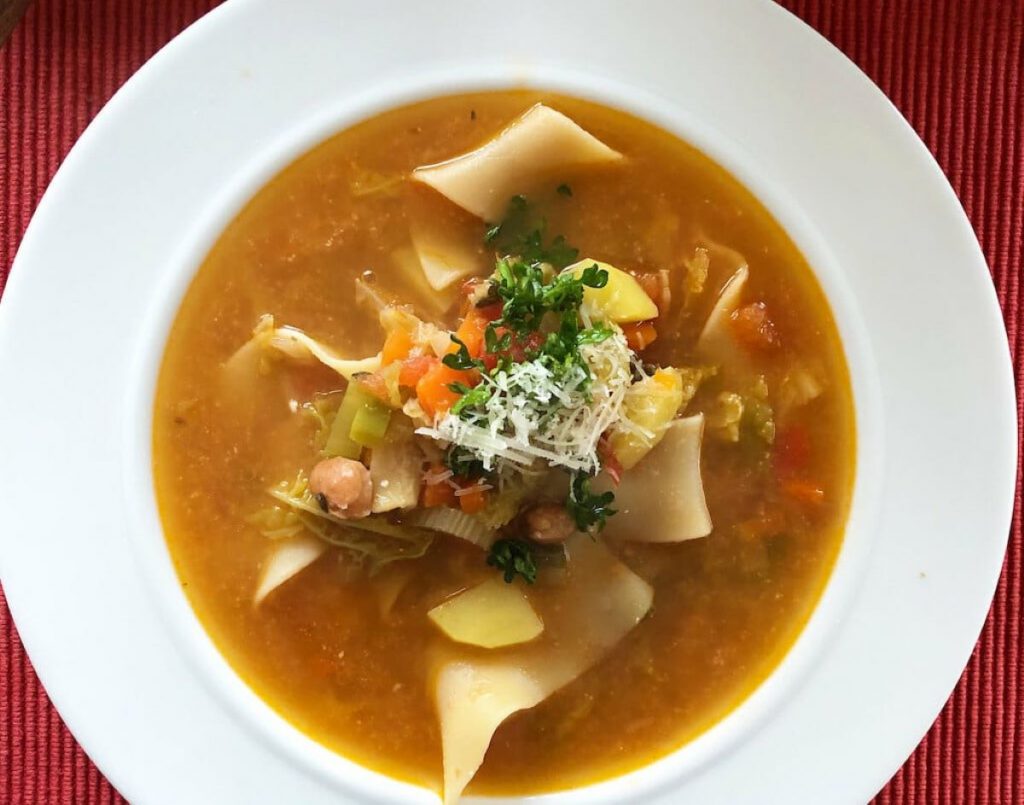
Osteria La Piola
A Piola is often a small restaurant with simple dishes – a sort of down-home cooking style spot. And that is exactly what you will find at Osteria La Piola. Small wooden tables with classic red checkerboard table clothes create a cozy atmosphere. The menu is nothing but the Milanese classics, no frills, just genuine great home-style Milanese cuisine.
You’ll find the Osteria just down the road from the Lima metro stop. It’s conveniently located next to Bar Basso, meaning you can grab a traditional Negroni Sbagliato for aperitivo before your meal.
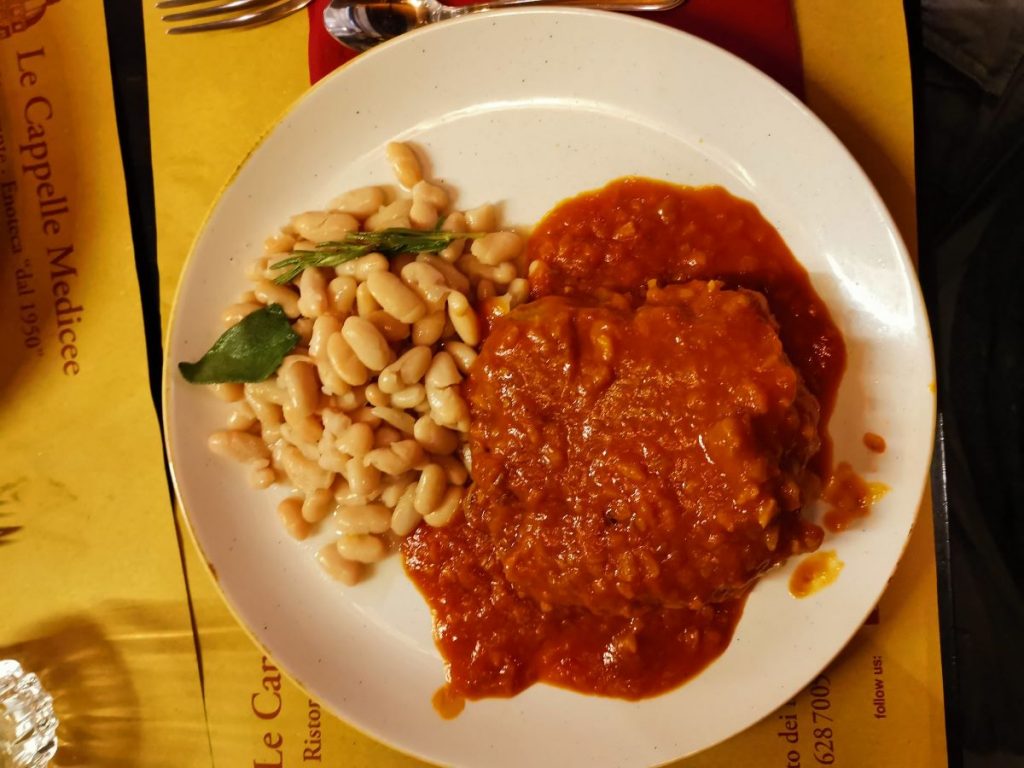
Trattoria Testina
An elegant location to enjoy a few of the classics at an approachable price. Just between Milan’s Isola and Centrale areas, you can find Trattoria Testina. The Trattoria welcomes guests with a warm and modern setting with a touch of vintage shown through the classic red-checkered tablecloths and exposed wooden beams.
Here you can enjoy authentic Milanese cuisine, with an excellent wine list to pair. Testina is a more intimate setting, making it perfect for couples.
As you can see, Milanese food is much more than just pasta and pizza. Similar to the city’s passion for fashion obsession, Milan’s restaurants pride themselves on offering only the best quality whether that means traditional recipes or more avant-garde dishes.
Want to explore more of Milan after lunch? Why not take a pre-dinner walking tour? Take a look at our options, such as our Best of Milan: The Last Supper Tickets, Duomo and City Tour. Our expert guides will fill you in on all of the amazing history of this remarkable Italian city.

